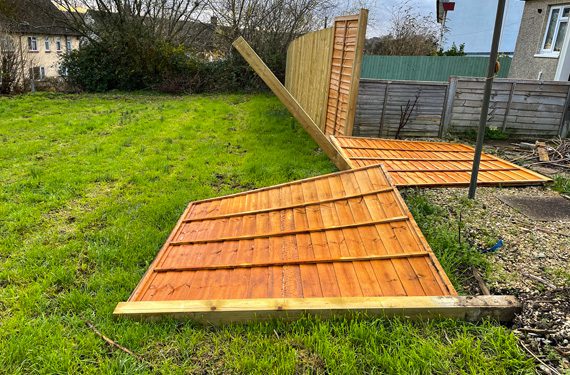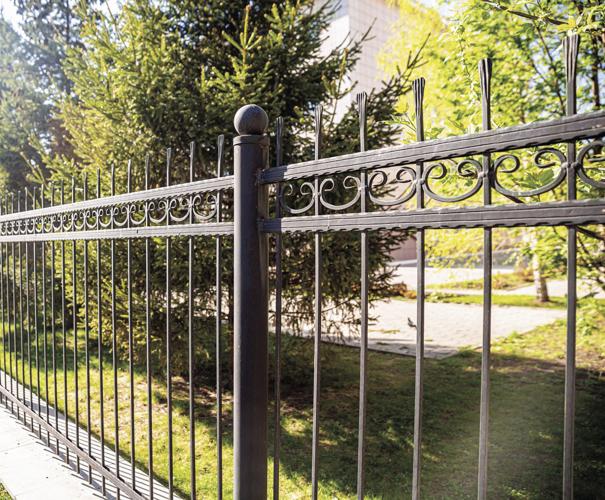All Categories
Featured
Setting up a fence on your building can add personal privacy, security, and aesthetic charm, but prior to you begin digging holes and setting blog posts, it's important to understand whether you need an authorization. Not obtaining the required licenses can result in penalties or the need to eliminate the fencing.
Why Are Permits Needed for Fencing Installation? Licenses are essential for making certain that your fence adheres to local zoning laws and building regulations. These policies assist make sure the security of your building and the bordering area. Furthermore, allows protect against disagreements with neighbors or regional authorities, specifically when it concerns home lines, elevation limitations, and overall style.
Oftentimes, regional authorities need authorizations to control points like visibility at junctions or the closeness of a fence to public rooms like walkways or roadways. Licenses also help make certain that fencings are set up correctly and securely, especially when it involves unique products or high fencings.
Common Kinds Of Licenses for Fence Installment. The kind of fence you desire to install and your place will identify which permits are called for. Right here are one of the most typical kinds:
Structure License. A structure authorization is generally needed for fences that go beyond particular elevation restrictions (commonly over 6 feet), are located near a public road or pathway, or are made from certain products. Building allows make certain that the framework meets local building regulations, including safety standards.
Zoning Permit. Zoning licenses are typically called for to guarantee that your fencing follows regional zoning legislations. Zoning legislations can specify where a fence can be put on your residential or commercial property (e.g., along home lines or in front backyards), along with established restrictions on fence elevation. These regulations are made to avoid blockages that could impact website traffic safety and security or community aesthetics.
![]()
Setback Authorization. In some areas, you might require a setback authorization to put your fence a details range from home lines, roadways, or energies. Setbacks are planned to keep proper area in between frameworks and residential or commercial property limits, reducing potential conflicts with neighbors or public framework.
Homeowners Association (HOA) Approval. You will likely need authorization from the HOA before installing a fencing if your residential or commercial property is part of a community controlled by a Homeowners Association (HOA) HOA standards usually govern the style, height, products, and also shade of fencings, making certain that they match the general aesthetic of the community.
The Refine for Acquiring a Fence Permit. To get a fencing permit, you usually need to call your neighborhood city or county office. The majority of locations have a structure division or planning workplace where you can request permits. The procedure involves completing an application and providing comprehensive details concerning your suggested fencing, including:
Fence style (materials, height, style) Location on the property. Building line information (for accurate positioning) In most cases, a website strategy showing the proposed fencing's placement will be needed. You may additionally need to pay a license cost, which can differ based upon location and the intricacy of the job.
As soon as you send your application, the local authorities will review it to ensure the fence follows neighborhood laws. Depending on your place, you may also need to allow or set up an assessment for a property survey.
When Do You Not Required a License? Sometimes, an authorization may not be called for. Commonly, you could not require a license if:
![]()
The fencing is under a specific height (frequently 3-4 feet for front lawns) You're changing an existing fencing with the exact same kind and elevation. The fence is momentary (such as a garden fencing) However, it's constantly an excellent idea to consult your local building or zoning division to validate the demands, as regulations can differ.
Repercussions of Not Obtaining an Authorization. Falling short to get the required permits can result in different problems. One of the most usual effect is being fined or asked to get rid of the fencing. Sometimes, you may require to re-install the fencing according to code, which might be pricey and lengthy. Furthermore, not adhering to the appropriate allowing process can produce troubles with next-door neighbors, especially if your fence expands beyond your property line or doesn't fulfill height or style needs.
Verdict. Prior to installing a fence, make certain you're conscious of the neighborhood guidelines and whether you require a license. By acquiring the correct authorizations, you'll make certain that your fencing is legally certified, risk-free, and free from future problems.
Why Are Permits Needed for Fencing Installation? Licenses are essential for making certain that your fence adheres to local zoning laws and building regulations. These policies assist make sure the security of your building and the bordering area. Furthermore, allows protect against disagreements with neighbors or regional authorities, specifically when it concerns home lines, elevation limitations, and overall style.
Oftentimes, regional authorities need authorizations to control points like visibility at junctions or the closeness of a fence to public rooms like walkways or roadways. Licenses also help make certain that fencings are set up correctly and securely, especially when it involves unique products or high fencings.
Common Kinds Of Licenses for Fence Installment. The kind of fence you desire to install and your place will identify which permits are called for. Right here are one of the most typical kinds:
Structure License. A structure authorization is generally needed for fences that go beyond particular elevation restrictions (commonly over 6 feet), are located near a public road or pathway, or are made from certain products. Building allows make certain that the framework meets local building regulations, including safety standards.
Zoning Permit. Zoning licenses are typically called for to guarantee that your fencing follows regional zoning legislations. Zoning legislations can specify where a fence can be put on your residential or commercial property (e.g., along home lines or in front backyards), along with established restrictions on fence elevation. These regulations are made to avoid blockages that could impact website traffic safety and security or community aesthetics.

Setback Authorization. In some areas, you might require a setback authorization to put your fence a details range from home lines, roadways, or energies. Setbacks are planned to keep proper area in between frameworks and residential or commercial property limits, reducing potential conflicts with neighbors or public framework.
Homeowners Association (HOA) Approval. You will likely need authorization from the HOA before installing a fencing if your residential or commercial property is part of a community controlled by a Homeowners Association (HOA) HOA standards usually govern the style, height, products, and also shade of fencings, making certain that they match the general aesthetic of the community.
The Refine for Acquiring a Fence Permit. To get a fencing permit, you usually need to call your neighborhood city or county office. The majority of locations have a structure division or planning workplace where you can request permits. The procedure involves completing an application and providing comprehensive details concerning your suggested fencing, including:
Fence style (materials, height, style) Location on the property. Building line information (for accurate positioning) In most cases, a website strategy showing the proposed fencing's placement will be needed. You may additionally need to pay a license cost, which can differ based upon location and the intricacy of the job.
As soon as you send your application, the local authorities will review it to ensure the fence follows neighborhood laws. Depending on your place, you may also need to allow or set up an assessment for a property survey.
When Do You Not Required a License? Sometimes, an authorization may not be called for. Commonly, you could not require a license if:

The fencing is under a specific height (frequently 3-4 feet for front lawns) You're changing an existing fencing with the exact same kind and elevation. The fence is momentary (such as a garden fencing) However, it's constantly an excellent idea to consult your local building or zoning division to validate the demands, as regulations can differ.
Repercussions of Not Obtaining an Authorization. Falling short to get the required permits can result in different problems. One of the most usual effect is being fined or asked to get rid of the fencing. Sometimes, you may require to re-install the fencing according to code, which might be pricey and lengthy. Furthermore, not adhering to the appropriate allowing process can produce troubles with next-door neighbors, especially if your fence expands beyond your property line or doesn't fulfill height or style needs.
Verdict. Prior to installing a fence, make certain you're conscious of the neighborhood guidelines and whether you require a license. By acquiring the correct authorizations, you'll make certain that your fencing is legally certified, risk-free, and free from future problems.
Latest Posts
Advantages of Purchasing Preventive Cars And Truck Care
Published Nov 27, 24
0 min read
Montclare Auto Repair
Published Nov 27, 24
0 min read
The Ultimate Guide to WyHy Business Membership Benefits
Published Nov 27, 24
1 min read